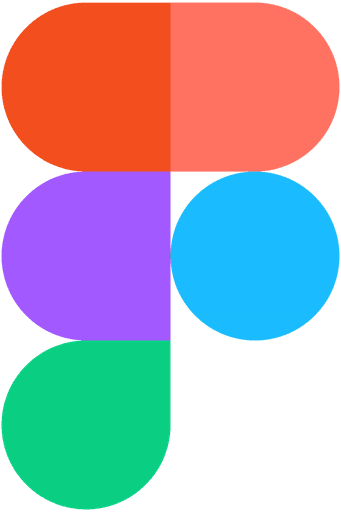Healthy Bedtime Routine
Mude
Mude dives deep into your sleepless nights. By reminding you to recognise little moments in life and to relive them before bed, it offers a wind-down routine that is reassuring and calming, guaranteeing you a restful night. The success of this project will be measured by user retention, user satisfaction, as well as self reported data such as sleep quality.
In a rush? Check the final prototype here.
Self-Initiated Project
Lifestyle
Mental Health
UX Researcher
UX Designer
1 month
Challenge
This project aims to understand the reasons behind bedtime procrastination, thus helping users form a healthy bedtime routine. It seeks to provide a mindful bedtime experience that leaves users calm, fulfilled and ready to detach from the virtual world.
Results
The redesigned app features a clean, clutter-free interface, making it easier for users to navigate and access essential features.
The improved onboarding process resulted in a 35% increase in new user adoption rates.
The addition of personalization and customization options enhanced user engagement, leading to a 25% increase in user retention rates.
30%
User Satisfaction
40%
Task Success
? %
User Engagement
Process
Research & Analysis: I conducted exploratory research to understand the severity of bedtime procrastination, as well as the causes and potential ways to tackle it. My methods for the exploratory research were secondary research and survey.
Project Definition: The problem at hand is to help users recognise their achievements and be present during the day so users feel fulfilled leading up to bedtime, and create a mindful and distraction-free experience to detach them from the online world.
Wireframing & Prototyping: After laying out main features and elements, I created wireframes to explore some solutions proposed above, and decided on main components for different screens for lo-fi prototype.
Usability Testing: I conducted guerrilla testing on 5 users with my lo-fi prototype, and gained valuable insights to improve the general structure as well as the content of my initial design.
Hi-fi Design, Moderated User Testing, and more Iteration: After finishing my first version of hi-fi prototype, I conducted 3 moderated user testing sessions to gather user feedback on the overall journalling and winding-down experience, and made further changes to my design.
Exploratory Research
This exploratory research aims to understand:
Is bedtime procrastination a severe problem?
What are common activities for users before bed?
What are the causes of Bedtime Procrastination?
What do users find helpful in their bedtime routine?
Which demographic groups are most affected by bedtime procrastination?
Secondary research is time-efficient in synthesising information from multiple sources, thus a great way to lay the groundwork for a personal project. I have incorporated findings from secondary research into survey to understand the correlation between bedtime procrastination and users' occupation, sleeping habit, bedtime activities and stress levels.
Findings
Students and women are most likely to be affected by Bedtime Procrastination, but it also affects people who procrastinate in other aspects of their life.
The leading contributor of bedtime procrastination is the psychology of "reclaiming me-time" (normally with a deeper cause of stress and anxiety), followed by poor control of the use of digital devices (either on social media, or watching TV series). Users find activities such as journaling, reading, meditation, and listening to white noise, gentle music or a relaxing podcast helpful as part of their bedtime routines.
Bedtime procrastination could have serious negative impact on people, including:
Sleep deprivation (and subsequent impact on memory, decision making);
Irritability and difficulties regulating emotions;
Accumulated stress leading to mental health problems;
Physical health issues, such as cardiovascular problems and metabolic disorders.
Project Definition
Based on our exploratory research, Mude will focus on addressing the following challenges:
How might we help users reduce stress, and feel more present in their daily life?
How might we create a fulfilling and distraction-free bedtime experience that users will consistently come back to?
I decided to use journaling as the prominent feature to help users feel present in their life. By reminding themselves of the moments they had during the day, users can have a reassuring farewell routine to end today, and wind down for a good night's sleep.
Break it Down, Further
In order to define design challenges in this project, I mapped out the user flow on FigJam to identify triggers for using the app, user frustrations and "the happy path".
I have identified the entry points/triggers that motivate users to open the app:
Experiencing a moment that they want to record;
Taking a picture of something meaningful;
Wanting to look up a past experience;
Starting to wind down.
Users might get frustrated and drop out when:
Not knowing what to write;
Thinking something is not worth recording;
Not meeting their goals of using the app (due to lack of consistency or unpleasant user journey).
As the main feature, the winding down experience needs to be as calming and fulfilling as possible. This would require a healthy bedtime routine, appropriate environment, as well as a relaxed mood.
Therefore, I was able to break down the challenges further using HMW:
HMW create multiple entry points?
HMW make the tasks easy to follow and maintain?
HMW reduce user frustrations caused by lack of ideas when journaling?
HMW visualise results to increase user engagement?
HMW minimise distraction during the wind-down process, and make Mude the last digital interaction?
Key Screens and Elements
Here are the key screens and Elements I have identified:
Home
Straightforward CTA;
Welcome remarks;
Inspirational and reassuring encouragement for users to journal;
Date elements;
Navigation;
User profile;
Appealing interface.
User Profile
Basic system settings and profile settings;
Achievements based on use of the app, sleeping quality (linked to fitness devices), sleeping time and energy level tracking.
Journaling
AI-generated questions for inspiration;
Notebook-like page;
Allowing for attaching voice recordings and images;
Safe space for users to journal freely;
Time and location;
Choice for visual elements (page background, fonts etc).
Gallery
Calendar view to reflect consistency;
Search by date, location and key words;
Reminders like "this time last year";
Storage space linked to subscription status.
Wind-down
System bedtime reminder entry;
Bedtime scrolling interference;
Environmental set-up suggestions;
Mude review to remember moments of the day;
Bedtime feel-good messages (for achievements today and hopes for tomorrow);
Farewell to today ritual (old calendar page tear);
Option to turn "do not disturb" on;
Clear indication of "switch-off".
Ideation, Wireframing & Prototyping
I created wireframes to explore some solutions proposed above, and decided on main components for different screens for lo-fi prototype. This is the prototype I used to conduct guerrilla testing with.
Here are some feedback from my guerrilla testing:
Home page starting screen is redundant, and date element is distracting;
The button setup should account for accessibility more;
Wind-down screens are very text-heavy, and not helpful for relaxing;
Farewell page could be arranged after the moments.
Design & Iteration
I was able to build my first draft of hi-fi design with the following features:
Home Page
AI-generated questions reminding users to notice little moments in life;
Notepad-like cover;
Rolling reminder encouraging users to write down anything;
Straightforward start button.
Journal
Choice of fonts and page background;
Option to attach images and voice recordings;
Option for voice input;
Distraction free.
Wind down
Wind-down reminder based on bedtime set up on system;
Environmental tips and "offline" guidance;
Say goodbye to today with a "page-tear ritual";
Immersive review reliving the moment;
Switch off
After a calming review and some reassuring remarks, users said goodbye to the day and are ready to fall asleep;
Assimilating the real-world "light-out" and "closing eyes" to detach users from the device and the virtual world that comes with it;
Option to turn "Sleep Mode" on to avoid further distractions.
Yes. I went to do another round of user testing and interviews (3 participants).
I conducted online moderated user testing with follow-up interviews.
Another important question was put forth: if I put down something that was annoying me in my journal, would that be even more unsettling as part of my wind-down process?
There were also uncertainty about the general interface, including the colours and the night mode, as it appears "too rigid";
Some were unsure about the slideshow playing mode of the journal, thinking it more of a stimulation than relaxation.
Integrating user insights from this round of testing, I feel the need to rebrand Mude, by changing the overall aesthetics, and choice of interactions, I also decide to add on 2 other features:
Mood tracking to visualise the impact Mude could bring to users;
Emotional dumpster to offer users an outlet in their stressful daily life.
What's Next?
More User Research
Utilise user analytics to monitor user engagement with different features to decide the focus of the next phase;
User survey and user interviews to evaluate product performance and user satisfaction, identify user confusion and user frustration to provide a smoother ser experience;
Diary studies to engage users in self-reported user feedback to study user thoughts and behaviours (e.g. under what circumstances are users more likely to open the app (time, location, or specific triggers).
A/B testing of different AI prompts to observe engagement.
Improve User Acquisition and Retention
I will also explore how Mude can scale: Do we rely on users who are strong advocators to recommend and share? Do we add social features? How do we keep our users engaged and happy?
User Information
Mude should make it a priority to safeguard users' privacy and security, to gain trust and confidence among users and truly provide a stress-free experience.
Enhanced AI Integration
Currently AI is only used on the homepage "daily quote". Mude can explore ways of integrating AI in the wind-down process, e.g. generating a peaceful video for users to fall asleep to.
Conclusion
Mude started small and specific, and grew fuller with multiple rounds and a variety of user research. Further success of this project will be measured by user retention, user satisfaction, as well as self reported data such as sleep quality.
The prototype of the final design can be viewed here.

















